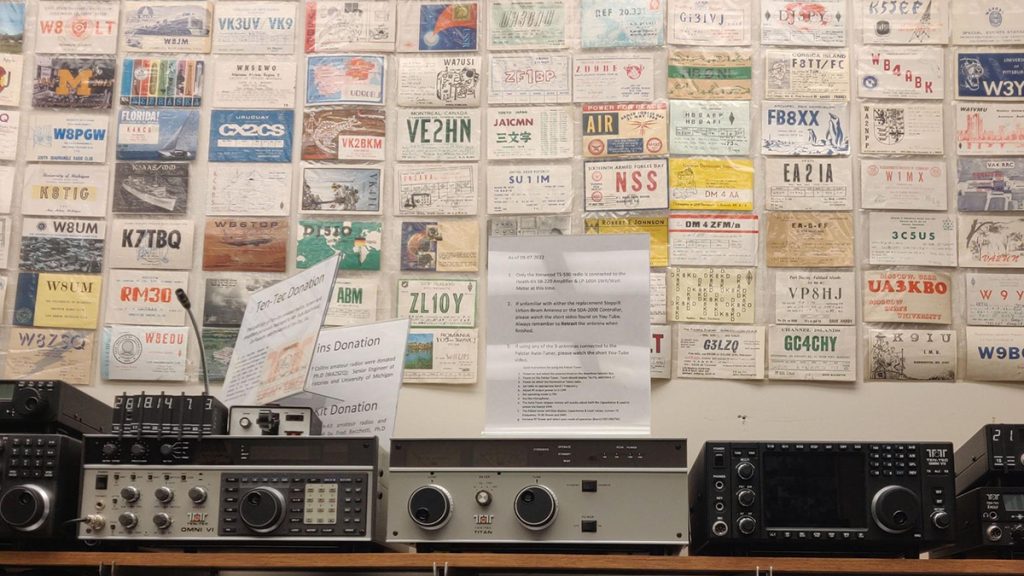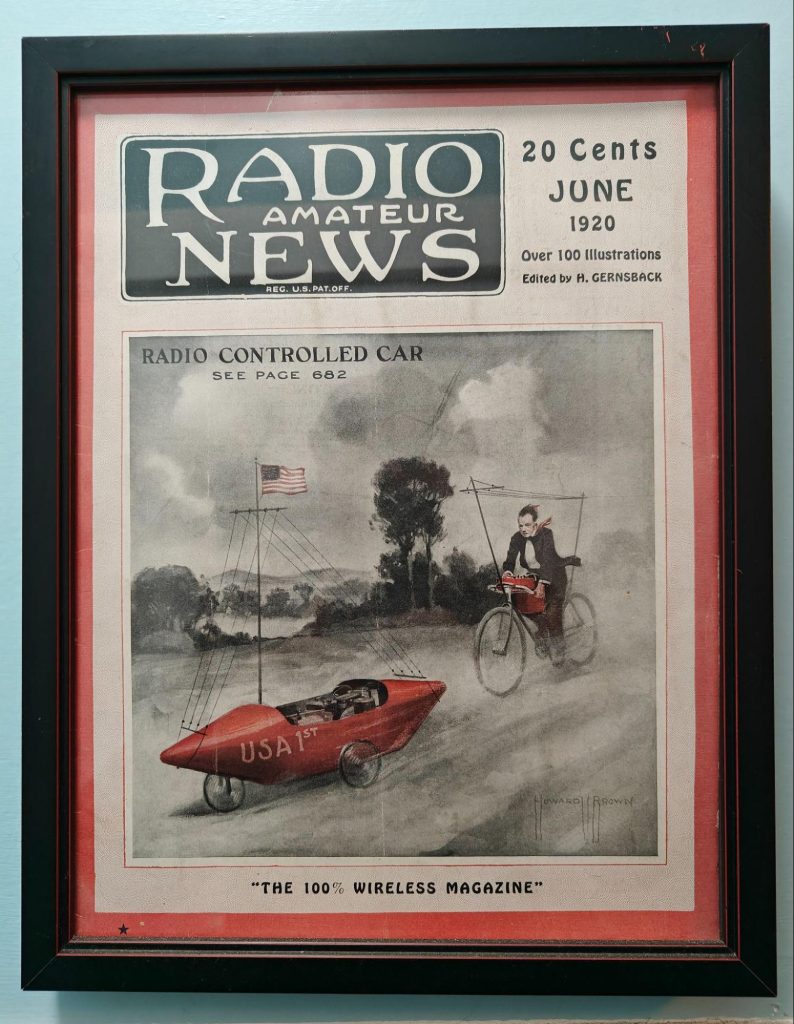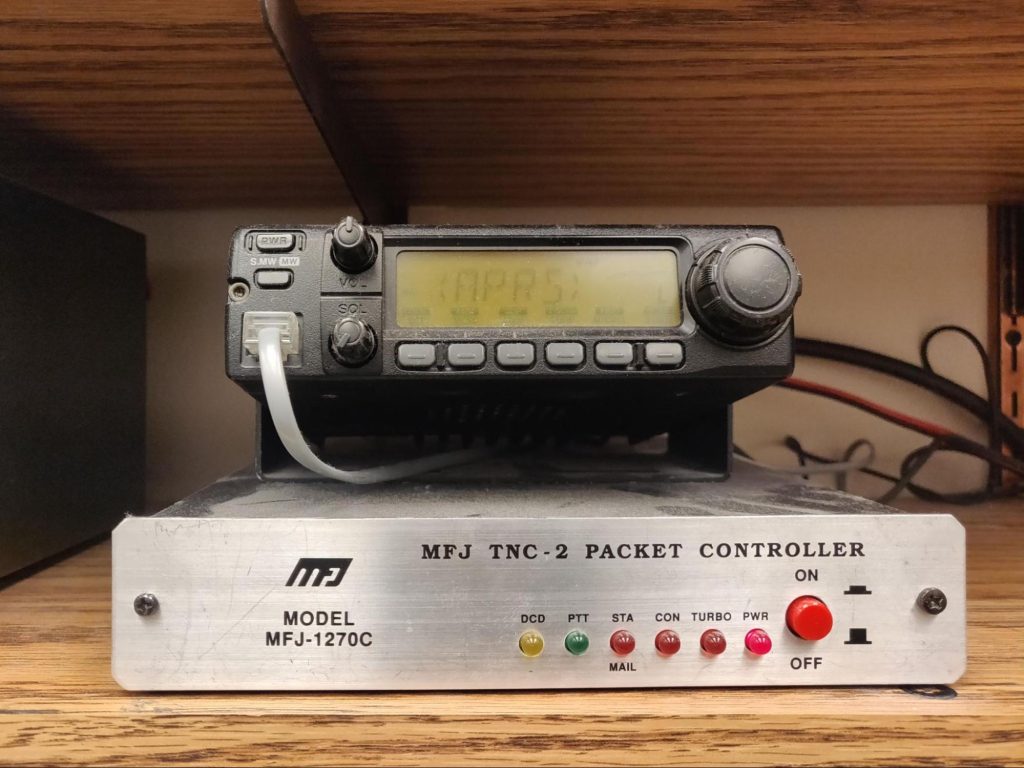
The ham radio licenses sent by radio amateurs who made contact with the W8UM radio club. Photo: María Arce.
When the Internet and the power are out, newsrooms might need a ‘hamd’
How can journalists report when there’s no power, electricity, reception? Radio amateurs come in handy
It had been a lovely week in New York in October 2012 when suddenly, the news interrupted my peaceful stay. A hurricane was getting closer, its name was Sandy. I could fly back to Argentina earlier or stay and cover its impact. My newsroom’s director decided for me — I had to stay, and I had no idea what to expect. In my country, we barely face natural disasters. The last one was an earthquake in 1977, I was two years old.
Sandy surprised me in all possible ways: the rush for food, water, and first aid kits, the anxiety waiting for the unexpected, the loss of power, the incredible silence — yes, silence — in the middle of the New York night. But I made it through the hurricane and its coverage, I was lucky. I had bought sailing equipment as part of my trip a couple of days earlier, and my waterproof jacket and offshore bibs saved me from the water coming from above and below.
A year later, I moved to Miami to work as the digital director of a TV channel. I can’t recall how many storms and hurricanes we covered. But it would be another hurricane, Hurricane María, that would shape my career and life forever, pushing me to develop my fellowship project at Reynolds Journalism Institute.
Hurricane Maria
I lived in Puerto Rico for less than a year when Hurricane Irma hit us on September 6th, 2017. Thousands of buildings were damaged and over a million residents lost power, but the Island survived. Two weeks later, Hurricane María finished sweeping away what its predecessor had left standing.
No one could have imagined the size or strength that María poured over Puerto Rico: sustained winds of 155 miles per hour, which ripped, churned, and bit everything in its path. Its torrential rains dump up to 40 inches of water, flooding the 78 municipalities and causing terror, anguish, and devastation. Its brutal gusts of up to 200 miles per hour swallowed trees, bent traffic lights, fractured light towers, removed roofs, and whatever it encountered. María was a glass-crushing machine. It shook palms as if they were toys. It raised a raging sea with waves up to 25 feet high. It ate up the beach and threw tons of sand over the most tourist streets of the Island. Everything was black and silent.
Being in charge of the digital coverage of one of the biggest media companies on the Island allowed me to see firsthand the struggles of hundreds of journalists, photographers, video editors, and other media workers. I saw how, little by little, the reception of each staff member disappeared as Maria was hitting them. It was horrifying. It took a week for my last video editor to return to the newsroom. When I saw him entering the building, I ran toward him, and we hugged. “Give me something to edit,” Pablo told me. His first words showed me his commitment and embodied the commitment of every journalist who must cover a natural disaster. But how can one do it when there’s no power, electricity, reception, nothing?
Building an alliance of ham radio operators and journalists
That’s how I became obsessed with planning for natural disasters. At the end of my Wallace Fellowship at the University of Michigan earlier this year, I came across the university ham radio club. John Palmisano, co-station manager of W8UM, generously walked me through the story of amateur radio and emergencies and discussed with me what I wanted to do: to build an alliance between newsrooms and ham radio operators who might be willing to assist in times of natural disasters to provide much-needed information about weather and local conditions.
It turned out that my idea was not that wild and that radio amateurs have historically lent a helping hand. Clinton B. DeSoto wrote in his book Two Hundred Meters & Down — The Story of Amateur Radio, published in 1936, that emergency communications operations had given an unparalleled service of “heroism in flood and disaster.” “No community in distress in this country has been without valiant aid from amateur radio,” he said. He had become a licensed radio amateur ten years earlier, in 1926. He was also associated with developing radio remote-control systems for military and amateur applications. From 1933 to 1936, he served as secretary of the Connecticut Valley Section of The Institute of Radio Engineers. He was also a journalist.
When writing those lines, DeSoto was thinking of the historic flood of March 1936 in New England, when it’s estimated that around 1,000 radio amateurs were involved in supporting and expedient evacuation instructions and supply of relief and rescue assistance.
The story of ham radio assistance include helping in times of wars, man made or natural disasters, like when after knocking down communication circuits, Hurricane Andrew forced the activation of radio amateurs that helped the devastated Dade County in 1992.
During Hurricane Katrina, in 2005, radio amateurs sent requests for search and rescue, guided a boat to extract a woman in labor and critical condition, and spread the word on medical personnel and supplies needed, among many other petitions.
The cycle repeated with Hurricane Harvey, Maria, Ida, and Ian, proving ham radio is still helpful because of its ability to operate in emergencies in which other technologies, such as our beloved and inseparable Internet, are unavailable.
Today, several official services like Amateur Radio Emergency Service or ARES created by the Amateur Radio Relay League, help communities in despair. ARES provides services to FEMA, the Red Cross, the Salvation Army, the National Weather Service, and NGOs when needed.
Another service is RACES or Radio Amateur Civil Emergency Service, which was established under the Federal Communications Commission, Part 97, which regulates operations during disasters and must be sponsored by a civil defense organization to be activated, usually during the response phase of a disaster. In contrast, ARES can be activated at any time.
But amateur radio operators have never partnered with journalists or newsrooms, as we know. I asked radio amateurs in the US and Puerto Rico if they would do it, always in compliance with FCC rules. All have said yes.
Two ham radio clubs not only said yes, but they also said they were eager to start the collaboration. I knew I had something big in front of me: it would take time, preparedness, discussions, agreements, and drills. Even getting my ham radio license. But the most important thing to helping more newsrooms do this work, it was going to be affordable as radio equipment can be really affordable and small.
I’m counting on some of the 759,958 people who have ham radio licenses in the United States. Over the course of my RJI Fellowship, I plan to build what I have called ARENA (Amateur Radio Emergency Newsroom Alliance) in Puerto Rico with the help of local radio amateurs. We will build an alliance and document it in a guide, so that any newsroom can replicate our model and use it to build a ham radio and journalist network in their state.


